#London College of Communication events
Explore tagged Tumblr posts
Text
Chapter 24. Reveries

Summary: "Has anyone told you," she began, "that you're a lot like your father?" Masterlist Previous Chapter // Next Chapter Words: 1,217 Listen to: 'About You' -by The 1975 A/N: WHY can't I write as fast as I think I'm so tired -Danny
You walk arm in arm with Marie as you examine each display with curiosity. It is the twins' 21st birthday next week, and they celebrate like they always do: by organizing an event supporting the scientific community to which they belong. Your sister fondly refers to them as the "Oddity Parade".
She isn't wrong, of course; most people in this community are strange, with a crazed look in their eyes and weird fashion choices, much like your own brothers. You'd be quite fond of this affair if it weren't because this night happens to be the anniversary of your first sexual experience—and just like that night, the celebration brings to Genovia a very uncomfortable guest.
"Tiny Dickens has arrived," your sister nudges you, already holding back a giggle.
You groan internally, eyes following her line of vision. There you spot Lord Dickens—his real name, something Marie and Paula think is hilarious. He makes a beeline to where you are, and Marie swiftly escapes, abandoning you to your luck because she loves watching you squirm.
"Princess Y/N," he smiles in that awkward, tight-lipped way, his bookish appearance that had charmed you six years ago now exasperating. "It is always my biggest pleasure to see you at these events.
"Arthur," you greet him. "Don't let me keep you from exploring, this year has brought us all kinds of advancements I'm sure you'll enjoy." You step aside, hoping, like every year, that he'll move on. He doesn't.
"You must promise me a dance, Your Royal Highness," he asks with a stiff bow. "Or else my evening won't be complete."
As he lowers his head, you mouth a curse, but when he stands to his full height, you plaster a smile on again and nod graciously. "Of course, Lord Dickens."
The young man takes your gloved hand and kisses it. After all the times Benedict kissed you, you understand why Arthur's always felt awkward. They never make full contact, never close enough to be tantalising or even enjoyable against your skin.
You scold yourself when you catch that thought. It doesn't happen as much as before, but it makes sense that Benedict would pop up in your head in a moment like this, while facing your first lover and his shortcomings. It's annoying.

It takes a week to plan the journey and another to travel from London to Genovia. Eloise was right; their mother doesn't protest much and only hesitates when she hears her daughter's plans to enroll in College. Lady Danbury convinces her not to worry much, and Benedict promises to bring Eloise back safe and sound.
The old lady pulls Eloise to the side first for a word and then, to Benedict's surprise, does the same with him. She smiles, and instantly, Benedict knows she is somehow aware of everything that transpired in his life last year. "Has anyone told you," she began, "that you're a lot like your father?"
Benedict blinks; the surprises keep on coming. "Pardon?"
"He was a hopeless romantic," Lady Danbury looks past him, lost in memories of better times. "Once he met your mother, nothing else mattered. Violet was quite flustered with his attentions—I believe you shared her struggle last year," she chuckles at the way he's unable to meet her eye. "It's alright, boy, your secret is safe with me. Can you do me a favour once you get to Genovia?"
He clears his throat. "Of course. What is it?"
"Be happy," she winks, patting his chest lightly. "Whatever that means, hm?"
Benedict stares at her without saying a word. She walks away, and Eloise shouts his name impatiently, already in the carriage and sticking her head out the tiny window.

They arrive with no delays. Genovia's main street is wide and easy to ride on. The weather is significantly warmer than in London, but the air is fresh, and it carries a smell of ripe fruit that only heightens the feeling of vitality.
There are all kinds of interesting people no matter where they turn to look: Women with trousers and hair flowing in the wind freely as they ride their horses, men with colourful linen skirts and heeled boots, people whom Benedict couldn't box as one thing or another, wearing a mix of male and female ensembles, and no one batted an eye—no one under the age of fifty, at least.
Gentlemen and ladies interacted with one another freely; some had chaperones, others walked in large groups, carrying books and bags, and Benedict realized they were all students, wearing the same jackets with a school emblem stitched on the back.
Eloise's face is worth every agonizing bit of planning Benedict had taken care of throughout the month: her eyes are bright, her smile big and eager, her hands gripping the edge of the window as if keeping her from jumping out of the carriage and running after the students.
The country is beautiful, but most importantly, it is all so Y/N. He can see it in the way girls laugh without covering their mouths and the bright colours decorating every building. The singing, the way everyone looks so free... he can see her walking the streets with Paula, arm in arm and giggling at some silly man in a poorly chosen suit.
"And so your Grand Tour begins," Benedict says playfully as they enter the Inn.
Eloise laughs. "I thought that was a costume for men? And I'm far past one-and-twenty."
"Yes, well, we're changing the world, aren't we?" Benedict winks. "Why not start by adapting our old traditions to the new age?"
The girl grins. "Thank you, brother. You're the only one who understands what it means to me to travel as a woman on my own terms."
His smile softens. "Of course, El. You deserve a chance."
As they go upstairs, Benedict overhears the conversation two footmen are having while carrying their luggage. "Total madness," one of them say, "those evenings are always fun even if it's work. They like it when we look around anyway—the princes are fond of explaining the displays to common folk like us."
"I would go just to catch a glimpse of Princess Marie," the second boy whistles. "Such a beauty! More lively than our Queen-to-be, don't you think?"
"I'd be just as winded if I were to rule the country and all its people..." The other boy declares good-naturedly. "But I don't think she needs your simpering. Lord Dickens was there, you know, keeping her company. If they marry, she'll have someone smart helping her rule."
"Lucky bastard," the other guy sighs. "Can you imagine being the Queen's consort? His life will be a breeze."
"Like King Nicholas," the first boy clicks his tongue. "Lords. They get everything."
Benedict would've stayed rooted in place after hearing the words "Queen's consort" if Eloise hadn't been tugging him along, happily rambling beside him and talking about the students they'd spotted outside. He walks guided by his sister, and once they part and enter different bedrooms, Benedict opens the first door he finds, thinking it a closet, only to be met with what Y/N once called a potty room.
There is a bathtub rooted to the floor and a second thing, a seat that's also stuck to the floor—flush toilet, was it? Next to it, a vanity with a bowl added to wash your hands, all very expensive-looking. A mirror is right above it, and his reflection looks back at him in distress.
Princess Y/N has a consort.

Next Chapter –>
Taglist.
@cokamarie24 @babypink224221 @Booknerdlife @djsporks @lght-roastcoffee @marii-ren @mythical-goth @omgsuperstarg @creepytoes88 @sarahskywalker-amidala @23victoria @shadowolf993 @squirreljoe @syxtiramishuui @stargirl-mayaa @dolllol2405 @aemondslove @inspiringwaves @optimisticsandwichgladiator @alloof @sydney-m @sirivusblack @mimibookish @marvelouslyme96 @imaginexred @black-kitten-imagines @bands-tv-movies-is-me @justanotherkpopstanlol @Nala @whatasadlittlelife @blkmystery @spiderbunny-13 @sky0401 @chxosunbound
#twoidiots writing#benedict bridgerton x reader#benedict bridgerton fanfic#benedict bridgerton imagine#benedict bridgerton x y/n#benedict bridgerton#benedict bridgerton fanfiction#benedict bridgerton smut#bridgerton netflix#Bridgerton x Princess Diaries crossover#TPD fic
33 notes
·
View notes
Text

Woman of the Day tennis player and professional golfer Althea Gibson, born in 1927 in South Carolina, became the first black champion to win Wimbledon OTD in 1957 and the first Wimbledon champion ever to receive a trophy directly from Queen Elizabeth II.
"Shaking hands with the Queen of England was a long way from being forced to sit in the colored section of the bus going into downtown Wilmington, N.C."
Althea’s rise to sporting excellence was never going to be straightforward. She was born to poor sharecroppers in segregated South Carolina but the Great Depression drove the family north to Harlem in New York, where they settled. New York City was not segregated by law but in practice, African Americans were separated by virtue of the housing available to them.
When Police Athletic League volunteers closed off to traffic the block where the Gibson family lived, the spot they chose as a paddle tennis court was right in front of their home. Althea was a natural athlete. By the age of 12, she was NYC’s women's paddle tennis champion.
Her teenage years were chaotic. She truanted - a lot - and got into fights and dropped out of school at eighth grade. She sometimes stayed out all night and her father would beat her when she returned. “I'm ashamed to say that I was still living pretty wild.” One thing drew her back though - tennis.
Althea played and was coached at the predominantly black Cosmopolitan Tennis Club. In 1942, she won her first tournament, the New York State Girls' Championship. It was sponsored by the American Tennis Association which was set up by African American players in 1916 because they were barred from the US Lawn Tennis Association.
She lost the 1946 championship but won something that was to change her life: the support of two African American physicians, one of whom gave her a home with his family while she attended high school and college, and the other who took her to tennis competitions during the summer holidays (he did the same for a young man called Arthur Ashe).
It would take a much longer post than this to tell you of the hurdles Althea had to overcome on the basis of her race but on 28 August 1950, she finally became the first black player to compete in the national tennis championship when she beat Barbara Knapp of England 6-2 6-2 at the West Side Tennis Club in Queens. The US Lawn Tennis Association dropped its colour bar the same year.
“The greatest help I got in being accepted…was from Alice Marble, the great champion. She wrote an open letter denouncing the USTA at that time for not permitting me to enter. After that I entered and you know the rest.”
In 1951, she had her first go at cracking Wimbledon but her breakthrough year was in 1956 at the age of 29. She won 16 of her first 18 tournaments, including the French championship at Roland Garros, her first title at a Grand Slam event, and the women’s doubles at Wimbledon.
Finally, the day arrived: 22 June 1957, 68 years ago today. It was a Saturday and a scorchio 32°C in London. In front of 15,000 spectators, Althea beat her sister American Darlene Hard 6-3 6-2 in 23 minutes, and accepted her trophy from Queen Elizabeth II.
“At last”, she said, “at last.”
She teamed up with Darlene to win the Doubles that year too and the following year, won the Ladies Singles for the second time and the Ladies Doubles for the third time.
Althea returned home to a ticker-tape parade on Broadway and a banquet a banquet at the Waldorf-Astoria and promptly went on to become the first black player to win the US Championships. She told friends and supporters in her community, “This victory belongs to you.”
She also returned to the same old thing: being refused entry to some hotels, one of which would not accept a reservation for celebratory lunch in her honour.
Althea died in 2003, aged 86, having won eleven Grand Slam titles and six doubles titles.
"I hope that I have accomplished just one thing, that I have been a credit to tennis, and to my country."
I’d say she did just that, wouldn’t you?
#radical feminist#radical feminist community#terfsafe#radical feminism#feminism#rad#radblr#radical misandrist
21 notes
·
View notes
Text
Joker Out Subs: Translating a Band

One of our Slovene members, Breda Hribernik (IG fabriconmyhead), wrote an article about JokerOutSubs in the students' magazine ENgLIST.
From our organisation and translation process to translation choices, Breda explained about JokerOutSubs from a linguistic perspective.
Thank you Breda, we're very proud to have you on our team! ❤️
Article below the cut 👇
Picture this: London, early April 2024. Day four of my solo journey to England. After queuing for several hours (something that would never happen in Slovenia), me and a few of the friends I met just a few hours ago finally made it into the venue: Shepherd’s Bush Empire, built in 1903 as a music hall. The high ceiling and intricate wall decor closely reminded me of the Slovenian National Theatre Drama in Ljubljana, which got us all even more excited for the concert. And after the two opening acts, the main performers finally
made it onto the stage.
There are events in life you expect to happen as if they were a part of a ‘Lifetime Bingo’. Scraping your knee as a child. Having a best friend. Going to college. But I never thought I would ever be attending a concert in London where a crowd of 2,000 would be loudly singing along to songs in my native language, Slovene. And yet that was exactly what I experienced during my Joker Out concert in London.
The band, consisting of Bojan Cvjetićanin, Jan Peteh, Jure Maček, Kris Guštin and Nace Jordan, gained international stardom during and after their Eurovision days. At the time of writing this article, the band had completed two successful tours in Europe, with a busy festival schedule awaiting them throughout the summer. This kind of global recognition is rather unexpected for a Slovene band. However, because most of the band's content is in Slovene, especially their older works, the language barrier can present a problem for foreign fans. This is where JokerOutSubs comes in.
1. General
Joker Out Subs (hereon JOS) is a fan-organised translation group. While translating celebrity content is nothing new, it mostly consists of individuals who translate short clips and post them online. Such translations have, in the past, been seen with K-pop musicians. JOS, on the other hand, is a group consisting of several members from all around the globe, me included. Alongside speaking Slovene, our members also speak languages ranging from Finnish to Japanese. The fan-translation group has one main goal: translating content.
The group was founded in May 2023, after we discovered a desire for translated content. Since then, the group whose main goal is translating different content in connection with the band has only grown and expanded. While a great deal of work is still done by speakers of Slovene, JOS would not be as successful without its other members. Social media managers, makers of closed captions, and editors are just a few people who really bring our translations to life.
2. Translation Process
Our translations have a large audience and, in some cases, they are even used by Slovene language teachers around Europe. We make sure to hold them up to a high standard: they are checked multiple times. Alongside our work being grammatically correct, we also want to ensure that the language remains neutral, in order not to implicate anything which does not occur in the original.
Communication-wise, we have a Discord server with many separate channels (for the various languages) and threads. We use Google Spreadsheets specifically for our translations, as using columns is a manageable approach. Column one contains the original text, column two has the translation. The following columns are reserved for comments.
Our translations are not always as simple as translating a written text. A great deal of the content we translate are either videos, radio interviews or podcasts. With those, creating a transcript is the first step. For videos, we also have to create closed captions with timings. Both of these processes are rather tedious, but the end result is a text ready for translation.
Once the first translation is finished, it is checked by a fellow member. For translations from Slovene, this will be a fellow Native Slovene speaker. The reviewer will correct the spelling, punctuation, and grammar of the translation in the form of comments, which the original translator can then approve or dismiss.
Still, the translation is not done yet. Our Native English speakers conduct the final correction of the text. This is mostly to find mistakes that have previously been missed, but English speakers also reshape the piece to make it sound as authentic as possible. The original translator again has a say in these corrections. Finally, our social media team publishes the piece.
Original translation
Check by Slovene speaker
Check by original translator
Check by native English speaker
Check by original translator
3. Translation Problems
As most of us can remember from our classes, translation is rarely done without a hitch. But when one is translating the work of five men in their twenties with diverse linguistic backgrounds (two members of the band grew up in bilingual environments), the work becomes even more difficult. And when these men use slang in their speech, the skills acquired in one’s university translation classes are almost useless.
One such example is an interview with the radio station Val 202, in which the lead singer Bojan Cvjetićanin talks about one of their departed band-members, Martin Jurkovič (who left the band in autumn of 2022 in order to pursue his studies). Bojan wanted to express that Martin was very successful in his field and therefore used the phrase ‘trga gate’ which does not have an equivalent in English. ‘Ripping underwear’ does not exactly mean ‘to be successful’ in English. As we wished to retain some of the vulgarity of the original, we translated the phrase as ‘kicking ass’.
“…. še je njemu v njegovih osebnih sferah odprlo v najboljši možni smeri, in tako kot rečemo mi, trga gate.”¹
… his personal spheres have taken off in the best possible way, and he is, as we say, kicking ass.
¹Joker Out between dreams and reality (Val 202: Music 202) - Part 1: Bojan and Jan
Alongside slang, dialects can also pose a challenge. As a promotion for their concert in Maribor, the band members organised a giveaway for two tickets. All the participants had to do was write down one of their favourite words from the Styrian dialect, before the band members shared their own. Jure Maček, the drummer of the band, said that his favourite word was ‘Štbljc’, which means ‘bedroom’. It would be nearly impossible to translate the word into English and somehow retain its Styrian colouring. In this case, we retained the original in the captions of the video and added a note with its meaning in English elsewhere. These culture-specific notes need to be done often.
“Štjblc je po moje blj.”²
‘Štjblc’* is better.
*bedroom
²[ENG SUB] 🇸🇮DanSlovenščine🇸🇮 A1 vajb: Joker Out share their favourite Styrian word!
Occasionally, Ljubljanščina, or the dialect spoken in Ljubljana, can also cause problems. In a video for A1 VAJB, Kris Guštin (one the guitarists) mentioned that his dream date would include the castle in Ljubljana, which is the city he grew up in. After listing the location, he said: “pa gasa.” Most of the JOS members understood ‘gasa’ as a narrow street, but it was clearly not used in this context here. After some consultation, we translated it as follows:
“Ljubljanski grad pa gasa.”³
Ljubljana Castle and away we go.
³[ENG SUB] What is your dream date? for A1 vajb
Slang and dialects are not the only elements causing us trouble, as the band members also tend to make up words on the spot. One such word, which luckily uses English word formation, has become quite a staple in the fandom. During the vlog of their first tour in the United Kingdom, the guitarist, Jan Peteh, coined the term ‘sparklative’. In addition, he coined the term ‘capybaster’ (capybara + capodaster) in another vlog. However, the most prolific when it comes to creating new terms and phrases is certainly the lead singer. In an Instagram Live back in February 2023 (translation yet to be published), the band was discussing whether they would prefer to be a mushroom or pregnant. Bojan responded that he would like to be “nosrečen’ (noseč + srečen). On a quest comparable to those of the people who had to translate the Harry Potter book series into Slovene, we had to coin a term which would sufficiently embody this neologism. With the help of a native English speaker, we coined the term ‘pregstatic’.
“Kar zabaven bi bil. V bistvu ej ej... v bistvu bi bil nosrečen.”⁴
It would be quite fun. I'd be basically, hey, hey... I'd basically be pregstatic.
⁴Joker Out Instagram Live (February 2023)
4. Original Content
As JOS expands, our work reaches beyond the realms of translation. We now also publish original content, such as our own podcast. Some episodes are readings of longer articles by our Native English speakers. We also have two episodes aptly called ‘Queue and A’ where a member of our team interviewed some fans while queueing for the concerts in Amsterdam (December 2023) and in London (April 2024).
Besides interviewing fans we have also managed to interview the band themselves on four occasions. Our first interview was filmed in Tampere, Finland in September of last year. Then an interview in Poznań, Poland was conducted in November 2023. In 2024 we have so far had two interviews (as of writing this article⁵): an hour-long deep-dive interview in London, UK and a shorter interview, discussing Italian culture in Padova, Italy. The interviews were conducted in English and subsequently translated into Slovene.
Moving forward, the goal of JOS is to keep on doing what we do best, which is to translate. We also hope to create more original content and continue to spread positivity in the fandom. To finish off with the words of the lead singer Bojan Cvjetićanin, “JokerOutSubs, no one translates it better.”®
⁵Between the time of originally writing this article and it being published, we managed to conduct another interview. This was our first interview with only one band member, Nace Jordan, and it was done in Slovene. Fret not, you can watch it with subtitles in 15 different languages.
#joker out#jokeroutsubs#bojan cvjetićanin#bojan cvjeticanin#jan peteh#kris guštin#kris gustin#jure macek#jure maček#nace jordan#jos: members#jos: masterpost#slovenian language#year: 2024#type: article#og language: english
51 notes
·
View notes
Text
The Communist movement in the West is today made up of a handful of grizzled geriatrics standing around trestle tables exuding a flavour of moth balls. Yet as the historian Richard Hofstadter wrote in 1963: ‘The right-winger needs his Communists badly, and is pathetically reluctant to give them up.’
Which is why braying Marxists are once again at the gates. According to Donald Trump, Joe Biden is ‘controlled’ by ‘Marxists, & Communists’. Elon Musk says ‘neo-Marxists’ and ‘full-on Communism’ are responsible for the estrangement of his daughter. ‘World renowned’ psychology professor Jordan Peterson rails against ‘post-modern Neo-Marxists’ and ‘cultural Marxists’. The conservative pundit James Lindsay claims that anti-racists want to impose a ‘total Racial Bolshevik Revolution’ on America.
There is no shortage of irony here. Isaiah Berlin once observed that a stratagem of totalitarian regimes is to present all situations as critical emergencies. Yet Berlin is too measured a thinker to carry weight among the frenzied populist currents sweeping today’s right. Instead we get initiatives like ARC (the Alliance for Responsible Citizenship) where a person only has to make a certain kind of noise to be welcomed onto the stage and into the fold. A Legatum and Paul Marshall-funded initiative, Arc’s stated aim is to ‘help re-lay the foundations of our civilisation’. In practice this means attacking ‘radical leftists’ and anyone it is expedient to pretend is a ‘radical leftist’. To paraphrase Lionel Trilling, the recent ARC event in East London saw a succession of speakers take turns unleashing a stream of ‘irritable mental gestures which sought to resemble ideas’. Kemi Badenoch claimed that western civilisation would fall without the Tories. Psychology professor Jordan Peterson said the West was in a ‘civilisational moment’. Douglas Murray talked of ‘civilisational renewal’.
Some, like the YouTube pundit Konstantin Kisin, spoke in a more optimistic key. Thanks to Trump’s election victory across the pond, ‘The tide is turning [and] our American friends are leading the way,’ Kisin proclaimed between hammy jokes about Chinese and trans people. ‘DEI, a system of anti-meritocratic discrimination, has been dismantled,’ crowed the alumnus of Clifton College Boarding School (term fees £17,650).
Were screens and short bursts of video not now the dominant sources of information about the world, I suspect a lot of these newly-minted culture warriors would be languishing noisily in obscurity. Instead, as we revert to a pre-literate oral culture, pre-literal pundits are in the ascendant (Kisin has appeared multiple times on BBC current affairs programmes and Badenoch has appeared on his podcast). Intellectuals are being knocked off their perches by influencers; politicians dislodged by game show hosts. As the Times columnist James Marriott has observed:
Among the attributes of oral societies are an addiction to the memorable, such as formulaic and cliché language, ‘heavy’ crudely-characterised personalities (like Cerberus or Donald Trump or Marvel superheroes) and to more violent forms of expression. This is in contrast to print which fosters subtlety, logical argument and emotional distance.
Kisin at least pays tribute to the vanishing world of letters. ‘Words are something of a speciality and a hobby,’ he writes in An Immigrant’s Love Letter to the West (2022). Not that you would know it from the prose in this mercifully slim volume, which gurgles with cliches and off-the-shelf banalities. Censorious persons are ‘Orwellian’; bad ideas ‘spread like wild fire’; conversations about difficult subjects ‘have become a way to separate us rather than bring us together’.
Having emigrated to Britain from the Soviet Union aged 10, Kisin credits the West with ‘saving’ him. Today he wants to repay the favour despite nobody asking him to. ‘As people seek to destroy [the West], I want to save it in return,’ he writes. Clearly some are pining for a diminutive Russian saviour: the book was a Sunday Times bestseller. Yet as an expression of love it is the equivalent of a clump of sun-baked Chrysanthemums purloined from a petrol station forecourt. A potted history of the Soviet Union is followed by a torrent of whiney non-sequiturs. Portraits of life under Communism function as a warning that the West is facing ‘the exact same threat’ from progressive reformers.
Conservatives are often the left’s best students. As much as Kisin likes to rail against identity politics, he is quick to use its conventions as a cudgel when the need arrises. The most reactionary arguments in his book are cleverly placed in the mouths of women and token minorities. The pseudo-feminist Camille Paglia blames gender non-conformity for societal ruin. A Black Catholic cardinal is wheeled out to warn about an ‘invasion’ of the West by ‘other cultures’ (perhaps with Sunday Times readers in mind, Kisin wisely emits comments by the Cardinal comparing homosexuality to ‘Nazi-fascism’).
Elsewhere Kisin disparages the ‘lived experience’ of others while expecting us to defer to his own. We must ‘deal with reality as we find it’, warns Kisin, or else find ourselves subject to the ‘cruel lessons’ of the ‘Soviet virus’. It doesn’t take long for the 7 million Ukrainians who perished in the Holodomor to be similarly employed for the purposes of relativism. ‘This tragic chapter of Russia’s past [more tragic for Ukraine one would think] didn’t emerge overnight. It grew slowly from some well-intended but seriously misguided ideas…To a much lesser extent [italics mine], a similar thing is happening across the West in today’s society’.
From Butyrka to bathos. The most grizzled camp prisoner probably did less hard labour than those five words. All the same, it is good to see Kisin taking his own advice to heart and seeing reality as it really is.
Jordan Peterson has been a regular fixture on the lucrative culture war circuit since his confected ‘cancellation’ back in 2016. As the years have rolled by his outfits have taken on the timbre and hue of his politics: everything has become more zany, lurid and bilious. The Peterson of 12 Rules for Life (2018) has been replaced by a blazing eyed YouTube prophet. Somewhere in the Peterson household a dog-eared copy of Iron John is sitting in a drawer gathering dust; today he seeks to begin the reformation by nailing a copy of The Gospels to the boudoirs of ‘the modern whores of Babylon’ (i.e. pornstars and e-girls).
I recently wrote a profile about Douglas Murray for Prospect magazine. Murray comes close to Peterson in terms of popularity. However what most struck me during my research was the gulf between Murray’s public persona (erudite intellectual) and the underwhelming nature of much of his written work. As I wrote in the piece:
Whereas on YouTube anti-woke pugilists may be content to chase the same brass ring into the gutter, a published author (not least one with pretensions to be an intellectual) must work up something more substantive…Yet Murray’s research is sometimes sloppy and the opposition trenches in his culture war are largely manned by straw men.
InThe War on the West: How to Prevail in the Age of Unreason (2022), Murray misquotes Karl Marx to make it sound like he was in favour of slavery. He also repeats a long-discredited claim that the French philosopher Michel Foucault was a child rapist. Not that these bungling forays into western civilisation are any impediment to claiming a monopoly of insight into how to ‘reconstruct’ it. Indeed, Murray has been lauded by the Wall Street Journal as ‘Europe’s Paul Revere’ (Murray’s radioactive forebodings about the ‘opportunistic infection’ of Islam are apparently redolent enough of Revere’s warnings to the Minutemen that ‘The British are coming’. Talk about waging a war on your own culture.)
Ukraine is a good litmus test as to whether the incessant bleating about western civilisation is anything more than a rhetorical weapon. Are Russian tanks and bullets more or less of an imminent danger than Islam, pronouns and Kamala Harris?
Hard to say, apparently. Prior to the American election, former prime minister Liz Truss stated on numerous occasions that Trump’s election victory was vital for ‘saving’ the West. ‘The world needs Trump,’ preened Kisin, who, like Murray, occasionally professes to care about Ukraine while acting as a stenographer for the politician who has been promising to sell the country out (and is presently doing so). Crawling out of the slimy entrails of Mar-a-Lago on election night, Murray declared triumphantly that Trump was going to ‘show what American leadership on the world stage actually looks like’.
A protection racket is what it looks like. It has taken less than a month for the self-serving prognostications of ‘heterodox’ intellectuals to collapse under the weight of their own contradictions. The hysterical cant about western civilisation was never about the defence of democratic principles - neither at home or from a revanchist Russia. Indeed, Peterson has blamed Nato for the war in Ukraine and pondered whether Putin might be on the right side in the civilisational struggle against ‘wokeness’. Not that it is hard to see why a partnership with Russia might be attractive to our own purveyors of reactionary piffle: the Kremlin also purports to be defending Christendom against gender freedoms and ‘spiritual catastrophe’.
‘This is the most important election of my lifetime,’ proclaimed the Somalian-born pundit (and one-time muse of ‘new’ atheist men of a certain age) Ayaan Hirsi Ali on 7 November 2024. ‘The situation could not be more dire. At stake is the very survival of our republic.’ Predictably enough these words formed part of a larger excretion on why she was voting for Trump. Concerns about the candidate who failed to concede the last election were merely symptomatic of (another stock phrase) ‘Trump Derangement Syndrome’. Kamala Harris had to be stopped for the sake of the republic. ‘The Democratic Party is a machine, taken over by the far-left wing of the party,’ Hirsi Ali warned.
As you may have noticed by now, it isn’t only washed up pundits who see the left as the primary adversary to be conquered. American vice president JD Vance recently turned up in Munich (of all places) to lecture Europeans on the ‘threat from within’.
In 1963 the historian Richard Hofstadter noted of McCarthyism that:
Communism was not the target but the weapon, and it is for this reason that so many of the most ardent hunters of impotent domestic Communists were altogether indifferent to efforts to meet the power of international Communism where it really mattered - in the arena of world politics.
McCarthyism was more about discrediting democratic Socialists, social democrats, liberals and supporters of the New Deal than unearthing Soviet subversion. These days the orchestra may have changed but the conductor has not. Bureaucratic McCarthyist intrigue has merely been supplanted by algorithmic appeals to the mob. Hierarchies find new ways of authorising themselves. Every day the envelope is pushed a little further, the rhetoric ratcheted up a little more. As John Ganz has written, we have reached a point where Nazi salutes are treated as an irreverent lark.
It seems clear that Michael Anton’s infamous ‘Flight 93’ essay has been taken as more than a figure of speech by many conservatives. As the Intelligencer describes the piece:
Anton chose the arresting metaphor of Flight 93, the hijacked plane from September 11, 2001, whose passengers stormed the cockpit in a desperate bid to stave off certain death. Electing Trump, he conceded, was risky (like seizing a plane from terrorists midair), but the alternative of electing Hillary Clinton posed certain political and demographic death.
Following the events of January 6, 2021, Anton suggested that the Republicans should prevent a national popular vote from taking place altogether on the basis that it ‘guarantees a Democratic win in every presidential election henceforth’. He was wrong of course but don’t imagine the thought has gone away. In order to preserve a narrow and exclusionary vision of civilisation, many are willing to take such a gamble.
Lest anyone should think this is a North American problem, plenty of castor oil-ish proclamations are being emitted here in Britain. The race science movement appears to have infiltrated Westminster. GB News presenters bleat menacingly about ‘foreign’-looking people walking British streets and champion ethnic cleansing in Gaza and the AFD (following last week’s German election, apologists for the Waffen SS now sit alongside admirers of Putin in the party’s parliamentary group). Right-wing publications advocate for ‘Caesarism’ as an alternative to democracy; or for locking up ‘traitors’ in government for having the audacity to give away Britain’s last African colony. A Conservative peer has been hosting far-right activists in parliament.
Surveying the political landscape, I am reminded of Ignazio Silone’s description of fascism as ‘a counter-revolution against a revolution that never took place’. Imaginary enemies can be just as powerful as real ones. You just have to convince enough people that all reform leads to revolution.
29 notes
·
View notes
Text






─ •✧ WILLIAM'S YEAR IN REVIEW : 𝐒𝐄𝐏𝐓𝐄𝐌𝐁𝐄𝐑 ✧• ─

𝟑 𝐒𝐄𝐏𝐓𝐄𝐌𝐁𝐄𝐑 : William, Catherine and George were spotted at White Waltham Airfield for George's flight lessons. Later, they spent time at the West London Aero Club. Kensington Palace released a welcoming statement for the new Earthshot Ambassadors and Council Members on William's behalf.
𝟓 𝐒𝐄𝐏𝐓𝐄𝐌𝐁𝐄𝐑 : He visited the "Homelessness: Reframed" Exhibition at the Saatchi Gallery.
𝟔 𝐒𝐄𝐏𝐓𝐄𝐌𝐁𝐄𝐑 : William appeared in a video announcing Blue Peter's Earthshot Competition.
𝟗 𝐒𝐄𝐏𝐓𝐄𝐌𝐁𝐄𝐑 : William appeared in photographs and the video released by The Princess of Wales announcing the end of her cancer treatment and that she will be continuing her recovery.
𝟏𝟎 𝐒𝐄𝐏𝐓𝐄𝐌𝐁𝐄𝐑 : William was received by His Majesty's Lord-Lieutenant of Dyfed (Miss Sara Edwards) at Swiss Valley Primary Community School in Llanelli. In the afternoon, he visited Wales Air Ambulance at Llanelli Gate. Afterwards, he visited Parc Y Scarlets to facilitate players as part of WRU’s “Missing Caps” Campaign.
𝟏𝟐 𝐒𝐄𝐏𝐓𝐄𝐌𝐁𝐄𝐑 : He was the Reviewing Officer at the Commissioning Ceremony at Royal Air Force College Cranwell and was received by Deputy Lieutenant of Lincolnshire (Mr. James Foster). Following this, he attended the Reception given.
𝟏𝟑 𝐒𝐄𝐏𝐓𝐄𝐌𝐁𝐄𝐑 : William visited Airbus UK Headquarters in Oxford to celebrate Airbus Helicopters 50th Anniversary. It was announced that Catherine & him had made a private donation to Pecan charity in aid of their recovery efforts following the theft food supplies from Southwark Foodbank.
𝟏𝟕 𝐒𝐄𝐏𝐓𝐄𝐌𝐁𝐄𝐑 : The Prince of Wales visited 22 Special Air Service Regiment at Stirling Lines. He released a personal tweet offering condolences on the passing of Gary Shaw and wishing Aston Villa good luck ahead of their Champion's League game.
𝟏𝟖 𝐒𝐄𝐏𝐓𝐄𝐌𝐁𝐄𝐑 : The Prince of Wales wrote the foreword to 'Take Care' - Lindsey Burrow's memoir.
𝟏𝟗 𝐒𝐄𝐏𝐓𝐄𝐌𝐁𝐄𝐑 : The Duke of Rothesay visited Shelter Scotland in Aberdeen. Afterwards, he attended a Homewards Aberdeen 'Thank You' event at Union Kirk. Subsequently, a Homewards & Blue Light Card partnership was announced. Sqn Ldr Mike Reynolds was confirmed as William's new equerry.
𝟐𝟐 𝐒𝐄𝐏𝐓𝐄𝐌𝐁𝐄𝐑 : William and Catherine attended the Divine Service held in Crathie Parish Church. They spent a private Weekend in Balmoral.
𝟐𝟑 𝐒𝐄𝐏𝐓𝐄𝐌𝐁𝐄𝐑 : An Earthshot × British Airways Partnership was announced.
𝟐𝟒 𝐒𝐄𝐏𝐓𝐄𝐌𝐁𝐄𝐑 : William unveiled the 2024 Earthshot Prize Finalists during a video message at the 2024 Earthshot Prize Innovation Summit.
𝟐𝟓 𝐒𝐄𝐏𝐓𝐄𝐌𝐁𝐄𝐑 : William gave a video message at UN General Assembly's 'The Campaign for Nature'.
𝟐𝟔 𝐒𝐄𝐏𝐓𝐄𝐌𝐁𝐄𝐑 : William received Mr. David Fein (Vice Chairman, Earthshot Prize) at Windsor Castle. He wrote the Foreword of 'At Your Side' Guides by Suicide Bereavement UK. He also wrote a letter to Emma Webb congratulating her for the JustGiving Awards win.
𝟐𝟕 𝐒𝐄𝐏𝐓𝐄𝐌𝐁𝐄𝐑 : The Prince of Wales as filmed an Earthshot Special in the woodlands of Buckinghamshire.
𝟑𝟎 𝐒𝐄𝐏𝐓𝐄𝐌𝐁𝐄𝐑 : He chaired a Meeting of The Prince's Council at Windsor Castle.

#review 2024#year in review : william#year in review : 2024#year in review 2024 : september#william review : september#review september#year in review 2024 : william#prince of wales#the prince of wales#prince william#william prince of wales#princess of wales#the princess of wales#princess catherine#princess kate#catherine princess of wales#prince an princess of wales#the prince and princess of wales#prince george#prince louis#princess charlotte#royal#royalty#royals#british royalty#brf#british royals#british royal family#kate middleton#royaltyedit
37 notes
·
View notes
Text
Throwback Thursday: George Julius Poulett Scrope
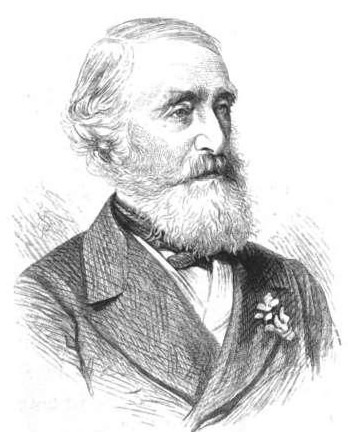
This is George Thomson . He was born in London in 1797 to a well-off family. His name was changed to Scrope (pronounced Scroop) after his wife inherited some land northeast of Bath.
Scrope attend St. John's College and that was where he fell in love with his future specialty: volcanoes. Even more important, he is the scientist that pioneered a specialty within volcanology now known as igneous petrology.

Igneous petrology is the study of how magma is formed and solidified. He went on expeditions to southern France, southern Italy, the Pontine Islands, southwestern Germany and many other places of notable past and present volcanism to study the rocks there. South-central France was probably his most notable work. A French geologist, Nicolas Desmarest, said that the mountains near Auvergne were actually extinct volcanoes. Scrope wanted to see for himself.

He found that Desmarest was right. The area was covered in layers of basalt. He wrote a book on it called Memoir on the Geology of Central France. Inside, he had beautiful plates drawn of the places and features he had seen. I mean, take a look at these beauties:




Here you can see the basalt columns layered on each other in the top three plates. You can see similar structures in the Madison Valley of Montana.

Reminds me a bit of Yellowstone Country. If I didn't know these were of France, I might think someone went to Montana, Wyoming, or Idaho to draw these.

When Mount Vesuvius erupted in 1822, he was actually present for it the lucky dog. He even drew this picture of the eruption later on:

When he returned home, he became the joint secretary of the London Geological Society alongside Sir Charles Lyell.

This crucial meeting would rock the geologic world (pun absolutely intended). That same year, Scrope would publish Considerations on Volcanoes. He would state that volcanoes actually played a major part in Earth's history by being the primary source for new rocks. This was not a well received vein of thought because it went against Neptunism, the prevailing idea for the formation of new rocks.

Neptunism was the idea that the Earth was once completely covered by a single superheated ocean and that as that ocean receded, it laid down layers of rock. While some rocks are precipitated out of water, Scrope found it hard to believe all of them were especially after his travels through France and watching Vesuvius erupt. The only person who praised his work was Charles Lyell.

In fact, Lyell spearheaded an expedition to corroborate Scrope's findings (which he totally did). From there, the two developed a strong friendship. They collaborated often, reviewed each other's work and supported one another when the geologic community criticized them for daring to think outside the box. They were such good friends they even died within a year of each other.
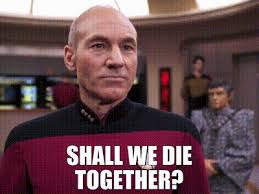
Together, the two would change the way we viewed the rocks we stand on, taking them from catastrophic formation to many smaller events over a much longer time frame.
Make sure to tune in tomorrow for closer look at the giant snail Campanile. Fossilize you later!
#fun facts#geology#science#science education#mineralogy#volcanology#igneous petrology#science history#volcanoes#eruption
15 notes
·
View notes
Text


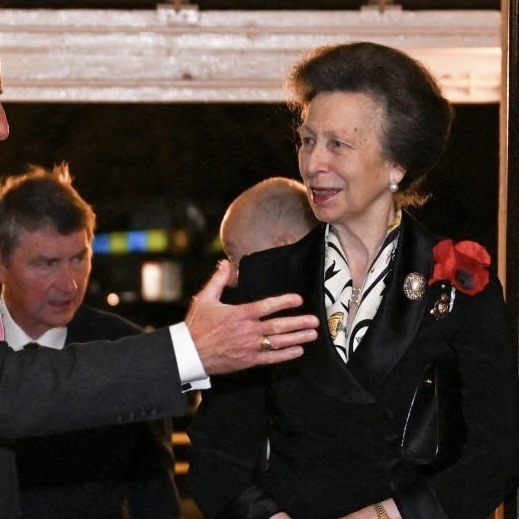



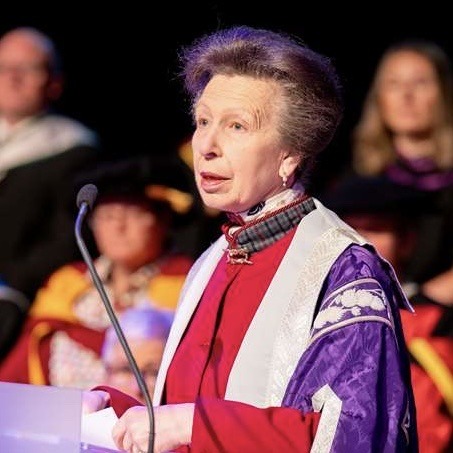
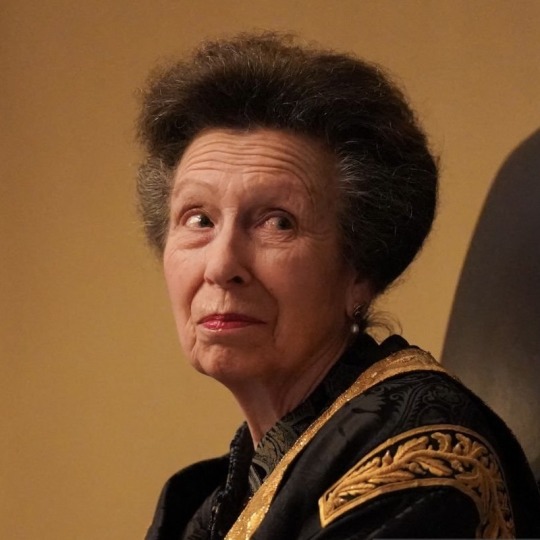

The Princess Royal’s Official Engagements in November 2024
01/11 As Visitor of Strathcarron Hospice, visited the Hospice. 🫂
As Deputy Colonel-in-Chief of The Royal Regiment of Scotland, visited the Headquarters at Edinburgh Castle. 🫡
As Patron of the Eric Liddell 100, attended an Awards Dinner at George Watson’s College, in Edinburgh. 🏃🏼♂️🍽️🏆
05/11 As Master of the Corporation of Trinity House, presented Merchant Navy Medals for Meritorious Service at the Corporation of Trinity House. 🎖️
As President of Racing Welfare, attended a Reception at Sladmore Gallery. 🏇🏼
06/11 On behalf of The King, held an Investiture at Windsor Castle. 🎖️
As Patron of the Learning and Work Institute, and as President of Carers Trust, this attended the “Driving Change” Conference at City Lit College. 📒
As President of The Duke of Edinburgh’s Commonwealth Study Conferences, attended a Reception at Brunswick Group. 📚
As Patron of Shaftesbury, later held a 180th Anniversary Dinner at St James’s Palace. 🍾
07/11 As Vice Patron of the British Horse Society, attended the Annual Awards and Race Day at Newbury Racecourse. 🐴
Alongside the King and the Duchess of Gloucester, held a Reception at Buckingham Palace for medallists of the Paris 2024 Olympic and Paralympic Games. 🥇🥈🥉
09/11 With Sir Tim Was present at the Royal British Legion Festival of Remembrance at the Royal Albert Hall. Also in attendance were, The Prince and Princess of Wales, The Duke and Duchess of Edinburgh, The Duke and Duchess of Gloucester, and The Duke of Kent were also present. 🌹
10/11 With Sir Tim Attended the National Service of Remembrance at the Cenotaph. Laid a wreath alongside the King, the Prince of Wales and the Duke of Edinburgh. Also in attendance were, the Princess of Wales, the Duchess of Edinburgh, the Duke and Duchess of Gloucester and the Duke of Kent. 🌹
11/11 unofficial Sir Tim, as GWR Advisory Board member, visited Swindon train station with the Poppies to Paddington, then travelled to Paddington Station by train. 🚝
unofficial Sir Tim Attended a Service of Remembrance at Paddington Station. 🌹
12/11 Attended the HIV Drug Therapy Glasgow Congress at the Scottish Event Campus. 💊
Visited the University of Glasgow’s Mazumdar-Shaw Advanced Research Centre. 🔬🥼
As Royal Patron of MND Scotland, attended a Supporters’ Reception at the MND Scotland Office. 🍾
13/11 Visited the College of Master Kilt Tailors’ Headquarters at Askival of Strathearn. 🪡🏴
Opened Letham4All’s Letham Community Hub. 🏢
Opened the YMCA Tayside Youth Centre in Perth. 👦👧
As Chancellor of the University of Edinburgh, held a Chancellor’s Dinner at the Palace of Holyroodhouse. 🎓🍽️
14/11 As Chancellor of the University of the Highlands and Islands, attended the Nursing and Optometry Graduation Ceremony in Inverness. 🩺🎓
16/11 As Patron of the Scottish Rugby Union, attended the International Rugby Match between Scotland and Portugal at Murrayfield Stadium in Edinburgh. 🏴🇵🇹🏉
19/11 Attended a Reception at the Suffolk County Council Offices before opening the Gull Wing Bridge in Lowestoft. 🌁🎗️✂️
Unofficial Sir Tim presented the Billy Deacon SAR Awards during the Air League’s Annual Reception Ceremony at the House of Commons. ✈️
20/11 As President of the Royal Yachting Association attended the British Olympic Sailing Team Luncheon at the Royal Thames Yacht Club. ⛵️🍴
As Commandant-in-Chief (Youth) of St John Ambulance, attended the Young Achievers’ Reception at the Priory Church of the Order of St John in London. ⛑️🩹
As Chancellor of the University of London, attended the Foundation Day at Senate House, and conferred an honorary doctorate in Literature on Queen Camilla, for her public work in the field of literature and literacy. 📜🎓
21/11 As Patron of the Royal College of Anaesthetists, attended their Winter Symposium. 💉❄️
As President of the City and Guilds of London Institute, attended The Princess Royal Training Awards Conference at Goldsmiths’ Hall. 🏆 Sir Tim Laurence presented the Billy Deacon SAR Awards during the Air League’s Annual Reception Ceremony, held at the House of Commons, on 19 November 2024.
With Sir Tim As President of the British Olympic Association, attended the Team GB Ball at the Roundhouse. ✨
26/11 Opened the Hospice UK National Conference at the Scottish Event Campus in Glasgow. 🏥
27/11 As Chancellor of the Health Sciences University, attended a Graduation Ceremony at the Bridge Theatre in London. 🎓📜
As Patron of Transaid, attended the Annual Showcase at the Africa Centre in London. 🚛🚚
As Royal Fellow of the Royal Academy of Engineering, attended a New Fellows’ Dinner at Drapers’ Hall. 🍽️
28/11 On behalf of the King held morning and afternoon Investitures at Buckingham Palace. 🎖️
29/11 As Patron of the Moredun Foundation, attended a Conference at the Moredun Research Institute in Penicuik. 🐖🐑🐄
Total official engagements for Anne in November: 43
2024 total so far: 414
Total official engagements accompanied/represented by Tim in November: 3
2024 total so far: 94
FYI - due to certain royal family members being off ill/in recovery I won't be posting everyone's engagement counts out of respect, I am continuing to count them and release the totals at the end of the year.
#hardest working royal#princess anne#we have seen tim at a lot of his own engagements this month but they aren’t included on the CC so not counted in my calculations sadly#operation working royal tim 2025 🫡#princess royal#tim laurence#timothy laurence#november 2024#aimees unofficial engagement count 2024
37 notes
·
View notes
Text
The more I think about how a human, modern au Toy Soldier wouldn't work the more obsessed I get with TRYING to make it work and frankly there's only a few more loops in this self dooming cycle before I make a college au for all of them.
-
Okay I saved this post to my drafts and then immediately had more thoughts on this hypothetical college au. All the mechs should be as close to their canon events/back stories as possible to avoid having wildly different personalities (obviously there will still be very differing personalities due to not being immortal space pirates, but this would be easiest). It would be a extremely sketchy comedy of errors.
Obviously this takes place in community college because community colleges are just like that™
Put under the cut because it got a bit long.
Jonny:
Still killed his dad and the entirety of the casino.
Using the money he got from the casino and Jack to fund his way through a college hours away from his hometown.
Is constantly paranoid over someone coming after him for his murders or finding out that his highschool diploma is a forgery (he didn't finish his last two years because of said murders).
Ashes:
Being put through college by the Lucky Sevens, and still does tracking work for them despite only being able to physically visit their turf over break.
Smooth Mickey has only just started working with the Aces in Ashes' freshman year.
It is going to be a WILD senior year when Ashes breaks open Mickey's scheme.
Banned from the card games club.
Tim:
Transfer student from London that only entered college in the first place to dodge the draft. He never expected to enter college in the first place and is therefore woefully unprepared.
Wildly protective over Bertie, who transferred with him and is the reason he dodged the draft in the first place.
Not as murderous as the canon Tim, but certainly getting there over immigration and transfer laws in the US.
Still has the first name of Gunpowder.
It is gonna be a WILD senior year when he and Bertie get caught up in the Lucky Sevens debacle and Bertie dies.
Raphaella:
Nobody knows what major she's taking, because by all intents and purposes it appears to be all of them.
She's breaking into the chem lab and making lsd after hours to fund her way through college.
Has cute little wings on her backpack that she made herself, but in reality they're just hidden storage compartments that she's been using to steal lab equipment.
Ivy:
Nothing about her is different except for the fact her autism is diagnosed this time.
She works at the community library and the college library. She started her major in library sciences, only to discover that she already knew more about it than her professors, so now she's an English lit major.
Marius:
Also got in on forged documents, but his are significantly shittier than Jonny's or Ashes' because he didn't have the money to pay someone for it. Still nobody comments on the birth certificate with "Byron" covered over with off-color white-out and replaced with "Marius.
He also completely erased the gender category while he was at it. Again, nobody who actually looks at these documents is paid enough to care.
Still missing an arm and he has broken up AND started fights by hitting people with his prosthetic.
Getting his doctorate in computer science, but usually does not tell people exactly what he's majoring in when he tells people he's going to be a doctor.
Nastya:
Fleeing a Russian rebellion and very obviously comes from wealth.
Her backstory is the same, just without the robots. Her history of wealth and terrible attempts at hiding her accent are painfully obvious to everyone she interacts with.
Double majoring in engineering and computer science. Unintentionally breaks Marius' scheme open when she asks to copy his notes when she missed a day for a class they share (she would have broken it faster if she knew what he was doing).
Was assigned as Raphaella's roommate and she gets free estrogen in exchange for ignoring everything else that's going on.
Got dragged into the friend group by Jonny after he came over one day to hang out with Raphaella and they bonded over disabling circulatory issues.
Brian:
On the run from the religious cult he grew up in, which he was kicked out of because he got internet access and started learning about reality.
Still has a hard time believing most people he'll talk to will accept basic facts like "the Earth is a sphere"
Did not have to forge papers to get in, but he would later get recommended to a good forger by Jonny and get some restraining orders out of it.
Ambulatory wheelchair user (because it makes me happy) with an extreme case of moral ocd
The Toy Soldier:
Holy shit this bitch had a bad childhood
In a dissociative state a good 90% of the time and has huge sensory issues with the feeling of its own flesh
Goes by "TS" and adamantly refuses to tell anybody why.
Being put through college by their wealthy adoptive mother. Definitely lied about the college being prestigious and doesn't want to examine exactly why it did that or why it felt so soul-crushingly important to get out of the country.
Was adopted by the widow after her husband died at war. Was basically treated as one family member swapped for another and was expected to grow up in his image and to be proper.
Walking on eggshells 24/7. Orders might as well still be a physical necessity to it for how much of a compulsion they are. Will jump to do anything to appease the people around it if they show any indication of being upset.
Tim becomes its first friend because him and Bertie are the only other transfer students from London. It rather likes talking about guns with him and giving away all its care packages to him so it doesn't dwell on why they make it so uncomfortable.
Starts off majoring in military studies over the ages, but will switch to general music studies after meeting the Angel.
Spoiler alert: it will still kill the Angel after she gets into a relationship with someone else, but thankfully this just makes a wild junior year instead of adding to the already wild senior year.
Obviously they're all still in a band together. And they're the most dysfunctional friend group this poor college has ever seen.
#the toy soldier#jonny d'ville#ashes o'reilly#gunpowder tim#raphaella la cognizi#ivy alexandria#marius von raum#nastya rasputina#drumbot brian#the mechanisms
36 notes
·
View notes
Text
Some good news to get you through
As someone super into history and current events, everything always sucks so I just want to make a little masterlist of some glimmers of hope. Will try to make multiple of these.
I shopped around for all of these, but this website and this website offers happy stories all in one place for those who don't have the time.
Colombia outlaws child marriage after 17-year campaign
Jordan Recognized as First in the World to Eradicate Leprosy
Norway, Paraguay, Antigua and Barbuda join the Global Alliance Against Hunger and Poverty
Orran Gala Raises $400,000 for Armenia’s Most Vulnerable
Hanover firefighter creates ‘Belize Heroes’ to donate lifesaving equipment to home country
Norway’s Kon-Tiki Museum returns artifacts to Chile’s remote Easter Island
Minneapolis man's murder conviction vacated after 16 years
Hiking group for Muslim women breaks barriers as hundreds flock to the outdoors
Scientists find a 35,000-year-old saber-toothed kitten in the Siberian permafrost
Tupelo Preschool Teacher Donates Organ to Student
Author Katherine Rundell donates royalties to climate charities in Trump protest
Pan-Mass Challenge Raises Record $75 Million for Dana-Farber Cancer Institute
Texas woodpecker no longer endangered after 54 years
Researchers discover 'lost' frog species in the Andes after over a century
More states are adopting laws to protect children of family vloggers
A 19-Year-Old Who Spent Her Childhood In Foster Care Was Finally Adopted By A Former Caseworker
Dolly Parton Gifts $4.5 Million to Nashville Public Library
New Mexico sees nearly 10% more first-year college students, bucking national trend
21-Year-Old Raising His 4 Siblings Since Their Mom Died Surprised With $40K and a New Car
Easy-fit prosthetics offer hope to thousands of Gaza amputees
UNM alumni hike tallest peaks in Ecuador to make prosthetic care more accessible
London charity helps young mums thrive
Italian charity sends 15 tonnes of humanitarian aid to Gaza via Cyprus
Climate report shows the largest annual drop in EU greenhouse gas emissions for decades
Washingtonians defend the Climate Commitment Act
Voters decide MN Lottery will keep funding environmental causes
Finnish fathers taking nearly double length of paternity leave since 2022 reform
Oysters reintroduced to Firth of Forth appear to be 'thriving'
German union says auto and engineering workers to get 5.5% wage rise
Seaweed farming brings hope to Kenyan villagers hit by climate change
Previously extinct Cape Water Lily restored at False Bay Nature Reserve
From landfill to limelight, Ghana waste entrepreneurs win Earthshot Prize
A derogatory term for Native women will be removed from place names across California
Texas Native Health expands facility to better serve the state's Indigenous community
Borneo’s ‘omen birds’ find a staunch guardian in Indigenous Dayak Iban elders
African cinema takes to global stage with diverse storytelling
Maori haka in NZ parliament to protest at bill to reinterpret founding treaty
Animal welfare group works to rescue lions, pets in Lebanon
Inside a Massachusetts studio showcasing the work of artists with disabilities
#mental health#positivity#self care#mental illness#self help#recovery#news#current events#politics#us politics#disability#disabled#neurodivergent#neurodiversity#autism#autistic#lgbt#lgbtq#art#indigenous#aesthetic#cute#body positivity#body positive#punk#positive reminders#positive vibes#self esteem#self worth#self improvement
27 notes
·
View notes
Text

March 21, 2020 - British GQ
It's Sunday morning when I speak to MUNA down the line from LA. Lead guitarist Josette Maskin is drinking coffee in sweats on her sofa, while vocalist Katie Gavin is on her way to a composting workshop at a local library – possibly the most LA thing I’ve ever heard. In other words, they’re kicking it.
But that’s fair enough. 2019 was a big year for the electronic pop trio: they released their vibrant second album, Saves the World, and embarked on a 17-date tour of North America, plus two triumphant London shows at a packed Village Underground. ‘We’re not from London, but it felt like a homecoming, because London as a city has seen us grow so much as a band,’ says Gavin. ‘Everyone in the crowd was singing every verse.’
All of the members of MUNA are queer, an integral facet of the band’s DNA. After the Pulse nightclub shooting in Orlando, their soaring track I Know a Place became an unofficial anthem of resistance for the LGBTQ community, sung at vigils by grieving fans. ‘We didn’t write the song for it to be a way to remember the people who died,’ says Gavin, ‘but the fact that’s what it’s been used for is an honour I don’t think we could have imagined.’ Although at first MUNA were wary of being labelled a ‘queer pop group’, they’ve leaned into it. ‘A lot of our story has been about learning to accept the responsibility,’ says Gavin. ‘We love our community and want to be put to use.’
To be silent in the age of Trump would have felt like complicity. ‘We do live in hell, to be frank,’ says synth player and guitarist Naomi McPherson of the president. They regretted not making a political statement ahead of their appearance on Jimmy Kimmel Live! in 2016. When the opportunity to perform on the late-night institution came around again a year later, Gavin wrote an extra verse for I Know a Place, with the lyrics ‘He’s not my leader, even if he’s the president’. The verse has become a fan favourite, bellowed by US crowds in defiance of the racist, sexist Trump. ‘We do the extra verse when the spirit strikes us,’ explains Maskin. ‘For when it feels right.’
Being a political band in the era of Trump is a heavy mantle to bear. Although MUNA don’t plan to stop engaging politically, ‘We want to make music about pleasure and fun also, in opposition to the constant news cycle and oppression we feel,’ says McPherson. Besides, writing music about queer love and desire is an inherently political act. ‘Right now we’re writing straight-up sexy songs,’ says Gavin of the band’s ongoing studio time, ‘but the fact they’re about the relationships we engage in, and to be a queer woman openly singing about desire, is political. It doesn’t matter what we write, everything we do is political and personal at the same time.’
I ask MUNA whether they feel queerness has been appropriated to shift product, in the same way big brands bastardised feminism to hock scented candles and self-care bath foam. ‘I feel like any radical movement is at risk of being commodified and sold back to us,’ says McPherson. ‘That’s been happening for years since Pride became a corporate event. They put Che [Guevara] on T-shirts!’ But MUNA feel that, on balance, any representation is better than none. ‘Visibility is important,’ Maskin adds. ‘It can mean a lot to some kid somewhere to see queer people represented.’
Speaking to MUNA, it’s clear they’re genuinely good friends. They formed in high school (not at a college party, as is often reported). “We’re definitely homies,” McPherson says with a laugh. ‘Jo and I live together, so we spend every waking minute in each other’s presence.’ They recently went roller-skating for Gavin’s birthday: she’s a good skater, the others less so. That strong base helped MUNA when they were coming up in the industry. ‘We’ve always had the privilege of having each other as protectors,’ says Maskin. Having creative control is of paramount importance – they stand in opposition to the high-polish, PR-workshopped pop bands dominating the charts on any given day. ‘We wouldn’t have been able to exist as a band unless we were the ones controlling and making what we do,’ Maskin says.
When the band toured with Harry Styles in 2017, they saw up close the effects of international celebrity on an individual. ‘When we first met, I felt a lot of concern for him,’ says Maskin. ‘It’s such a crazy life he lives. But he takes it in his stride – he’s such a nice person and really cares about his fans. That level of fame is insane and unfathomable!’ But as MUNA continue to carve out a special place in the hearts of their fans, queer or otherwise, global fame looks set to be coming for them, whether they like it or not.
14 notes
·
View notes
Text










Angela Ferroti was born in Palermo in 1990. After high school, she moved to London to study at the London College of Communications and the University of Westminster, earning a degree in Photographic Arts in 2013. After years immersed in the photography and cinema industries, she returned to Italy, working on cultural events and refining her skills in communication. In 2020, she refocused on photography, driven by a desire to explore narratives between reality and fiction. Her latest project, inspired by a long stay in Alicudi, examines the relationship between humans and nature within the fairytale imagery of the Aeolian Islands. She is currently working on a book to expand on this project.
#photography#art collective#photomagazine#culture#art#female photographers#support female artists#women photographers
10 notes
·
View notes
Text
Dark Side Of The Ring Season 6 , Episode 10 Review
( TW : Mentions of tragic events , graphic violence , religion , prejudice, mental health)
Season Finale Episode Name : Becoming Muhammad Hassan
Key Points Of The Episode :
- Born Marc Julian Copani to an Italian family on April 16,1980
- Marc Copani began his career under the name , Mark Magnus in Ohio Valley Wrestling ( OVW ) in 2002 , becoming a 1 time OVW Heavyweight Champion
- In 2004 , Vince McMahon would say that he wanted an Arabic character as a response to the tragic events of September 11,2001 to mimic the stereotypes for the Arabic Community. Therefore , Copani would take on the Muhammad Hassan character and be introduced to the WWE fans through vignettes.
- As a part of the character , Hassan would have to make inappropriate flight jokes. He and his manager , Shawn Daivari, would have to stay in Kayfabe at all times to help Copani develop the gimmick and learn about Arab culture. He would also gain heat with the fans in his WWE TV debut in a segment with Mick Foley. He would also be accused of Cultural Appropriation.
- Signature move was The Camel Clutch and catchphrase was “ Since 9/11 ”.
- With his growing popularity, other wrestlers would become envious. They also felt that he didn’t pay his dues. Kurt Angle would tell Hassan that Eddie Guerrero would use the Camel Clutch , therefore , Hassan would confront Guerrero about using his signature move , leading to a wrestlers’ court session.
- Wrestlers’ Court : A meeting of all the wrestlers in a locker room to call out a fellow wrestler for wrongdoing. The Undertaker , who was the locker room leader at the time , was considered the Judge , Jury , and Executioner. As a punishment, Undertaker would make Hassan buy $1,000 worth of drinks for the entire locker room. Hassan and Guerrero would make up.
- Would get to wrestle Hulk Hogan at Wrestlemania 21. After the match , the Muhammad Hassan character would evolve in a darker way to get a main event push. Copani stated that he was uncomfortable with the way his gimmick was going but was silenced .
- Muhammad Hassan and The Undertaker would have a rivalry in order to become the Number 1 Contender to face Batista for the WWE World Heavyweight Championship. A controversial angle would be ran to follow the tragic London attacks in 2005. This angle would consist of a radicalized Hassan to bring out five men to mimic what’s happening in the Middle East by portraying acts of graphic violence on The Undertaker. This would cause WWE to be in hot water with viewers, UPN , sponsors , and the Islamic Community. The UPN network asked Vince McMahon to take Hassan and Daivari off of their shows. Therefore , they were banned from being on Raw and Smackdown. They could only work PPVs.
- The Muhammad Hassan character originally started off as someone who would talk about the prejudices and stereotypes that the Arab Community faced after 9/11. The character would also be born in America. He would also challenge the American Patriotism. Copani also knew that the way the gimmick was going was wrong.
- Hassan’s final match was against The Undertaker in 2005 at the Great American Bash. His WWE release would cause him to fall into Depression.
- Marc Copani went back to college to go on to become a teacher and then a principal. He is now the Human Resources director for his local school district.
- Shawn Daivari is now a producer for the WWE . Copani stated that they are still good friends and talk constantly.
My Review :
This episode explained the Muhammad Hassan character very well with the different points of view from Copani himself and fellow wrestlers such as Maven , Chris Masters, and Gene Snitsky. Also, hearing Jim Cornette’s take on it was interesting too . Knowing that Vince McMahon wanted to do this character to counteract with the tragic events of 9/11 and the London attacks was disappointing too. It wouldn’t surprise me if he was the one who came up with flight jokes. As always , the Dark Side of The Ring crew are the best when it comes to storytelling through reenactments. A lesson I think we can learn from this episode is to educate yourself on different cultures. Muhammad Hassan is still being talked about today as the prime example of real life tragedies being brought into a Kayfabe storyline .
As always , if I catch you being mean to someone because of who they are , or someone tells me you’re doing this , you’re banned from this blog and on my social media accounts . - Kay
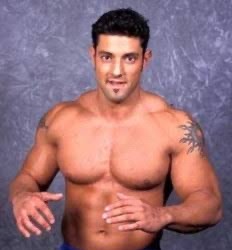




5 notes
·
View notes
Text







─ •✧ WILLIAM'S YEAR IN REVIEW : 𝐎𝐂𝐓𝐎𝐁𝐄𝐑 ✧• ─

𝟏 𝐎𝐂𝐓𝐎𝐁𝐄𝐑 : The Prince of Wales visited Royal Air Force Northolt to mark the conclusion of the "Up Against Time" Appeal. Afterwards, he visited GWR Kia's office in Brentford. Subsequently, William visited ENSO.
𝟐 𝐎𝐂𝐓𝐎𝐁𝐄𝐑 : William held an Investiture. Afterwards, he and Catherine met Liz Hatton & her family at Windsor Castle. Subsequently, a personal message was released by them following the meeting. In the evening, William met Aston Villa’s 1982 European Cup winning squad as he attended the UEFA Champions League game between Villa & Bayern Munich with his friends at Villa Park.
𝟑 𝐎𝐂𝐓𝐎𝐁𝐄𝐑 : William was received by the Lord-Lieutenant of Tyne and Wear (Ms. Lucy Winskell) at Birtley Community Pool. A new Royal Foundation Community Programme for Birtley was announced. He released a statement offering condolences on the passing of Mr. Alford Gardner.
𝟒 𝐎𝐂𝐓𝐎𝐁𝐄𝐑 : A message from William was a part of the NHS's Step Into Health Initiative 10th Anniversary brochure.
𝟓 𝐎𝐂𝐓𝐎𝐁𝐄𝐑 : A trailer of The Prince of Wales' upcoming docuseries was released. Kensington Palace released a photograph too.
𝟕 𝐎𝐂𝐓𝐎𝐁𝐄𝐑 : William appeared in a video message during the BBC's Green Sports Awards.
𝟖 𝐎𝐂𝐓𝐎𝐁𝐄𝐑 : William received Ms. Hannah Jones (Chief Executive, Earthshot Prize) at Windsor Castle. Aftwrwards, he participated in the Earthshot Prize Council Judging via video link. William and Catherine were represented by Mrs. Rebecca Priestley at the Memorial Service for Mrs. Julia Rausing.
𝟗 𝐎𝐂𝐓𝐎𝐁𝐄𝐑 : He attended a BAFTA × Royal African Society event to highlight support for young people within the Creative Industries.
𝟏𝟎 𝐎𝐂𝐓𝐎𝐁𝐄𝐑 : Will & Cat marked World Mental Health Day. The Prince and Princess of Wales visited the Southport Community following the horrific attack in July. They met the families of Miss Bebe King, Miss Alice da Silva Aguiar and Miss Elsie Dot Stancombe at the Marian Centre. Afterwards, they met Ms. Leanne Lucas at Compassion Acts. Finally, they visited were received by Deputy Lieutenant of Merseyside (Mr. Peter Oliver) as they met Emergency Responders from North West England at Southport Community Centre. Subsequently, A personal tweet was released by them.
𝟏𝟓 𝐎𝐂𝐓𝐎𝐁𝐄𝐑 : William attended a National Football League Foundation UK Community event. Later, he received Ms. Amanda Berry (Chief Executive, The Royal Foundation) at Windsor Castle. Subsequently, he held a Meeting. A Letters Patent was issued by the King delegating his duties to the Counsellors of State while on tour, making The Prince of Wales the highest ranking official in the state.
𝟏𝟔 𝐎𝐂𝐓𝐎𝐁𝐄𝐑 : William held an Investiture. He was received by the Lord-Lieutenant of Greater London (Sir Kenneth Olisa) at the Centrepoint Awards and Gala Dinner. A photograph of William was released as part of the lead up to the release of "Prince William: We Can End Homelessness". William released a statement welcoming Thomas Tuchel as the new England men's team manager.
𝟏𝟕 𝐎𝐂𝐓𝐎𝐁𝐄𝐑 : He was received by the Lord-Lieutenant of Cornwall (Colonel Sir Edward Bolitho) at Duchy College Stoke Climsland. Afterwards, he visited East Shallowford Farm. Finally, The Duke of Cornwall visited the historic Warren House Inn at Postbridge. It was announced that The Prince and Princess of Wales made a private donation to the DEC Middle East Humanitarian Appeal for providing life-saving aid in Gaza, Lebanon and the West Bank.
𝟏𝟗 𝐎𝐂𝐓𝐎𝐁𝐄𝐑 : Catherine and William marked Black History Month.
𝟐𝟎 𝐎𝐂𝐓𝐎𝐁𝐄𝐑 : Kensington Palace released a statement on behalf of William wishing the nominees the best of luck ahead of the BAFTA Cymru Awards.
𝟐𝟐 𝐎𝐂𝐓𝐎𝐁𝐄𝐑 : He released a personal tweet about Aston Villa's Champions League campaign. An unseen photograph of his was on display during King Charles visit to the National Centre of Indigenous Excellence in Sydney, Australia.
𝟐𝟕 𝐎𝐂𝐓𝐎𝐁𝐄𝐑 : Kensington Palace released unseen photographs from 1993 of The Prince of Wales, his mother Diana, Princess of Wales, of his first visit to the Passage Charity. A few photos from the upcoming docuseries were also released. He released a personal tweet congratulating Billy Monger for breaking the Ironman World Championships course record for a leg amputee by over 2 hours.
𝟐𝟖 𝐎𝐂𝐓𝐎𝐁𝐄𝐑 : William wrote a letter to Restore sending them his best wishes after one of the charity's supporters wrote a letter to bring their work to his attention.
𝟑𝟎 𝐎𝐂𝐓𝐎𝐁𝐄𝐑 : The first episode of "Prince William : We Can End Homelessness" was aired.
𝟑𝟏 𝐎𝐂𝐓𝐎𝐁𝐄𝐑 : The second episode of "Prince William : We Can End Homelessness" was aired.

#review october#year in review 2024 : william#william review : october#year in review 2024 : october#year in review : 2024#review 2024#year in review : william#prince of wales#prince william#william prince of wales#the prince of wales#princess of wales#the princess of wales#princess catherine#catherine princess of wales#princess kate#catherine middleton#kate middleton#british royal family#brf#british royalty#royal family#royals#royal#royalty#british royals#prince and princess of wales#the prince and princess of wales#royalty edit#royaltyedit
29 notes
·
View notes
Text

Hi fellow plant lovers and plant scientists! Please check out this exciting free online event hosted by the Royal Society of Biology. I will give a talk on my career path and academic journey. If you've ever wanted to know my "lore", this is the opportunity! Royal Society of Biology
Featuring lectures and short flash talks from a range of professionals within the industry, there will also be opportunities to engage with different members of the plant health community.
Talks include:
- 'Potato: How do we protect the UK’s second most important food
from pests and diseases?' by Professor Ian Toth, James Hutton Institute
- A career overview panel discussion involving Dr Matt Elliot, Royal Botanic Gardens Edinburgy, Katharine Farrell, Animal and Plant Health Agency
(APHA), and Dr Katia Hougaard, PhD, Imperial College London
- A Plant Health Undergraduate Studentship flash talk session
- And more!

Find out more and book your place: https://lnkd.in/enq3hsDg
#katia_plantscientist#royalsocietyofbiology#planthealth#plantscience#plantbiology#scienceevent#onlineevent#conférence#planthealthseries#agritech#plantpathology#careertalks
#katia plant scientist#botany#plant biology#plants#plant science#online events#conference#professional development#public speaking#science talk
4 notes
·
View notes
Text

Emma Reed (Wright) (May 30, 1925 - April 4, 2014) was born on the family farm in rural Redwood, Mississippi to Sallie and Smith Reed. She grew up on the farm but attended Coleman High School in Greenville. She enrolled in Tennessee State University where she obtained a BS in Health and Physical Education. She enrolled in New York University, graduating with an MA in Engineering.
She joined the Track and Field Team as a long and high jumper. She set records at Tennessee State. In 1947 she claimed the AAU Junior title in the high jump. In 1948 she finished second nationally at the AAU Outdoors Meet in London in the high jump and was victorious at the AAU Indoor high jump championship.
She was one of only 34 athletes from Tennessee State to participate in the Olympics. She got her first chance for glory and a gold medal at the 1948 Olympics in London. She was 23 years old when she took part in the Women’s Long Jump for Team USA which ranked 12th in the international competition. Her best jump had a distance of 5.290 feet which was tied for 11th during the competition. This number moved her to the Final Round where she achieved a distance of 4.845 ranking 12th overall.
She participated in the Women’s High Jump for Team USA where she tied for 14th in the event. She achieved a height of 4.6 feet which was her overall personal best.
She returned to Tennessee State at the end of the Olympic games. She resumed her studies and graduated from State. She began teaching African American history at Barber-Scotia College.
She married Julius Wright (1960-61). There were no children from the marriage. She began teaching at Leland Junior High in DC. She became a tennis coach at the William H.G. Fitzgerald Tennis Center in Rock Creek Park.
She moved to Seattle to be close to her family. She was a devout Christian who attended Bethany Community Church. #africanhistory365 #africanexcellence
13 notes
·
View notes
Text
Black history month (Canada edition)
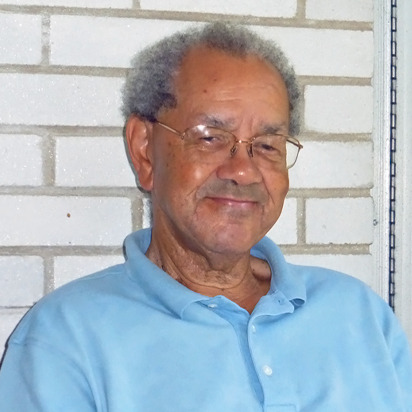
Dr. George Phills
Dr. George Phills was a Black Psychologist who was committed to his profession and the community he served in Ontario. He learned very early in life the importance of family, strong community ties and a good education. He and his siblings were taught that with hard work and determination, hardship could be overcome so that immigrant families can build a rich life for themselves. These values were instilled in them by his father Isaac (who was the first Black man in Canada to receive the Order of Canada), and his mother, Mary Alda Phills.
Dr. Phills returned to Sydney in 1963 where he was the head of a child guidance clinic. Next, he joined the London Board of Education as a Consulting Psychologist. Later he became the chief psychologist for the London Board, a position he held for 22 years. He always led the department with a clear vision, a high level of integrity and an unwavering commitment to the importance of enhancing the welfare of students. While working at the London Board, he helped to guide many innovations which included but are not limited to School Teams, Early Identification Process, Social Skills Project, and the Tragic Event Response Team. Dr. Phills supported many students throughout his career, giving them sound advice, unwavering support and encouragement that made a lasting difference to their lives.
Dr. Phills held a teaching position at Western University and served on the Board of Directors of many major mental health services in London. As a Psychologist, he was a pioneer in addressing hazing among athletes and teams in the Ontario Hockey Association. Further, Dr. Phills was invited to do workshops on Psychology in several provinces across the country and spent two years teaching Psychology at the University of the West Indies in Trinidad. His work on behalf of the Black community in London needs to be noted. He worked unselfishly on behalf of many of its members who sought his counsel and help with family issues. He was also called upon to help many of them who were experiencing systemic racism in London's community systems.
Dr. Phills was committed to developing the profession of Psychology in Ontario. He had a role in establishing the Ontario College of Psychology, the governing body of Psychologists in the province. His inspiring leadership led to the development of Psychological Services within the London Board of Education in the 1970s. His contributions to the advancement of Psychology in Ontario did not go unnoticed. In 1990, he was awarded the prestigious Bea Wicket Award for contributions in Education and Mental Health. In 1995, the Frank Brennan Award was bestowed on him for his contributions in London on behalf of children and families in crisis. In 1996, he was the recipient of the Distinctive Service Award given by the London and Region Psychological Association.
In retirement, Dr. Phills continued to help others. He had always enjoyed sports which included golf, tennis, and curling. He combined his love for sports and his skill in psychology to do private consulting and counselling. He also loved music. He was a founding member of the Forest City Choir. He was also a person of faith. Dr. Phills was an active member of St. John’s the Divine Anglican Church in Arva. On many Sunday mornings, he could be found doing readings and prayers as part of the morning service.
Dr. Phills died in 2021 at the age of 85. However, his legacy will not be forgotten by the students with whom he worked, members of the Black community, and his staff at the London Board of Education. He will be remembered as a man with an engaging personality, and a man who sought only the best in others.
3 notes
·
View notes